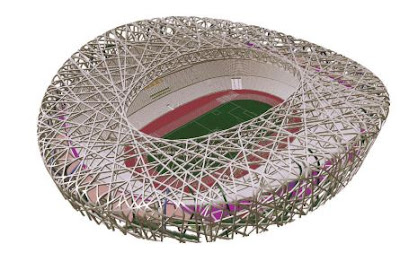STRUCTURE AS ARCHITECTURE BOOK DOWNLOADS
STRUCTURE AS ARCHITECTURE BOOK DOWNLOADS
KINDLY SCROLL DOWN AND DOWNLOAD
short description about the book.
This chapter presents structural analyses of two very different buildings. Between them, they exemplify structure enriching most aspects and areas of architecture. These analyses introduce the many ways structure contributes to architecture and prepares the way for a more detailed investigation and categorization of the architectural potential of structure in subsequent chapters. The following two case-studies illustrate the considered use of exposed structure in very different architectural contexts. First, the National Stadium, Beijing, displays an exuberant and chaotic exterior structure, but it is more muted when experienced from the interior
Exterior and interior expression reverses in the second building, the Baumschulenweg Crematorium. Within its formal minimalist exterior envelope, impressive exposed interior structure in the form of ‘randomly placed’ columns transforms the main space, leading to alternative architectural readings. National Stadium, Beijing Built for the Beijing XXIXth Olympiad, which was held during August 2008, the National Stadium is the largest and most dominant building at the Olympic site. Accommodating 91,000 spectators during the Olympics, the oval-shaped stadium has a roof structure 313 m long by 266 m wide, including a large elliptical opening above the stadium pitch. A retractable roof was originally designed, but omitted at a late stage during the design process. The height of the saddleshaped top surface varies from 40 m at its lowest point to the approximate height of a 20-storey building – 70 m – at its highest (Figure 2.1). The rounded vessel-like form comprises two independent free-standing structures: an interior reinforced concrete bowl with its three tiers of sloping seating, and the perimeter and roof steel structure. The bowl structure is itself divided
The outer two zones, to use Louis Khan’s terminology, ‘serve’ the major central area that accommodates three chapels and a condolence hall (Figure 2.10). Walls dominate the exterior elevations, functioning as both structure and cladding. Side walls initially read as approximately 2 m thick, but in fact they are hollow – doors from the entry portals lead to rooms within the ‘walls’. Elsewhere, relatively thin edges of exposed walls and slabs express the dominant structural language of wall, repeated within the interior box-like modules that enclose one large and two smaller chapels. Ceiling slabs over these three spaces are also slotted, allowing light to enter through louvred glazing. Gentle curved ends to the ceiling slabs relieve an otherwise rigid adherence to orthogonality. A study of the main floor plan indicates tripartite longitudinal subdivision – front and back porticoes and chapel spaces lie at each end of the centrally located condolence hall. Structural walls that are generously penetrated with openings at ground-floor level separate and screen the chapels from the hall. Within each longitudinal zone, structural walls subdivide space transversely. In the middle zone, walls delineate the condolence hall from the side waiting rooms and the crematorium.
CIVIL NOTES -CLICK HERE
QUIZ PRACTICE
RCC
RCC-1 -Click here
RCC-2- Click here
𐩘𐩘𐩘𐩘𐩘𐩘𐩘𐩘𐩘𐩘𐩘𐩘𐩘𐩘𐩘𐩘𐩘𐩘𐩘𐩘
SOM/MOS
𐩘𐩘𐩘𐩘𐩘𐩘𐩘𐩘𐩘𐩘𐩘𐩘𐩘𐩘𐩘𐩘𐩘𐩘𐩘𐩘
𐩘𐩘𐩘𐩘𐩘𐩘𐩘𐩘𐩘𐩘𐩘𐩘𐩘𐩘𐩘𐩘𐩘𐩘𐩘𐩘𐩘
𐩘𐩘𐩘𐩘𐩘𐩘𐩘𐩘𐩘𐩘𐩘𐩘𐩘𐩘𐩘𐩘𐩘𐩘𐩘𐩘𐩘
RESIDENTIAL PLAN
#1 (40' x 80') - Click here
#2 (30' x 50') - Click here
#3 (30' x 24') - Click here
#4 (30' x 60') - Click here
#5 (30' x 70') - Click here
#6 (25' x 60') - Click here
#7 (20' x 60') - Click here
#8 (30' x 40') - Click here



















COMMENTS